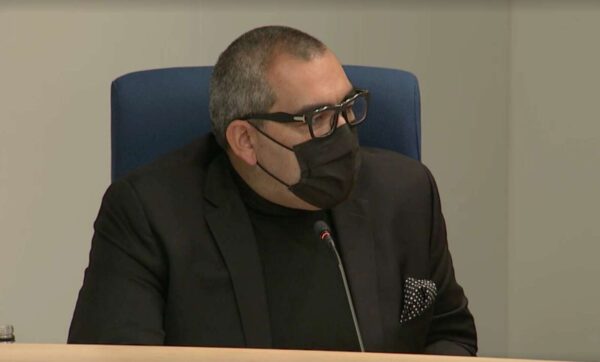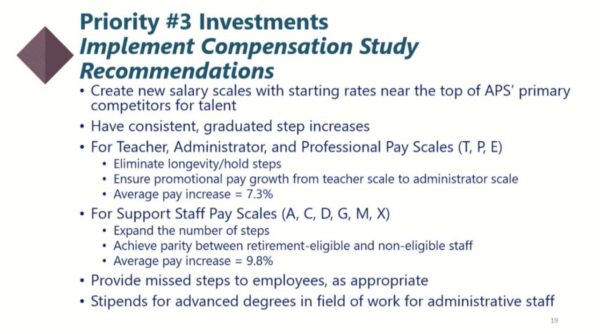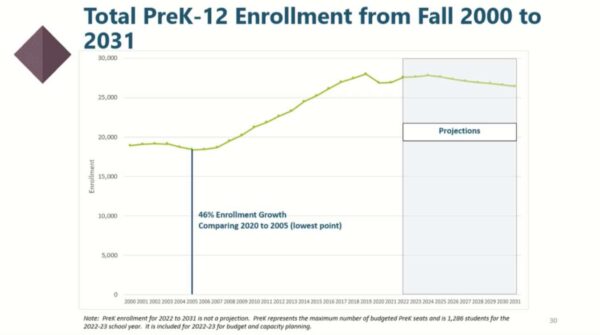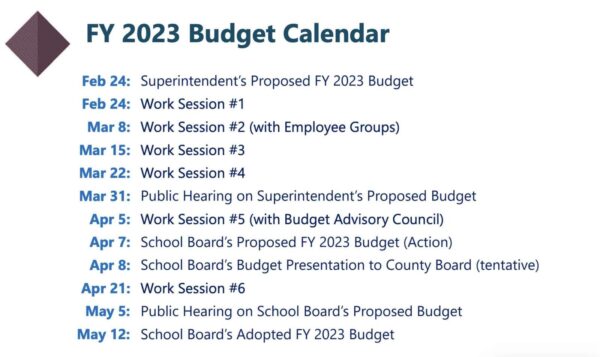
For the first time in four years, Arlington Public Schools presented a balanced budget for its upcoming fiscal year.
Last night (Thursday) Superintendent Francisco Durán told the School Board his proposed $746.1 million operating budget for July 2022 to June 2023 invests heavily in students with disabilities, English-language learners and other students who are struggling, while ensuring base salaries and raises for staff that are competitive and sustainable.
His proposed budget, with a 6.4% bump in spending compared to the current fiscal year, includes $51 million in new investments and about 82 new positions. These range from assistants, behavioral specialists and therapists for students with disabilities to reading and math coaches at Title 1 schools and buildings with more than 650 students.
School Board members received his budget proposal — and the big, black “zero shortfall” noted — with a great deal of optimism.
“Well, isn’t this refreshing compared to the other budgeting cycles we’ve been through,” School Board member Cristina Diaz-Torres said. “As a whole, I think we’re in a different and more optimistic position than we have been in recent years.”
Between 2018 and this year, the school system proposed budgets with deficits and multiple tiers of optional cuts to consider.
The economic downturn caused by the pandemic exacerbated this trend — and APS walked into the 2023 planning process with a predicted $69 million deficit, driven largely by the need to use $40 million in one-time funding to balance the 2022 budget.
When December and January rolled around, APS heard promising news: Arlington County generated an additional $48.8 million for schools and former Gov. Ralph Northam’s proposed budget provided almost $15 million in additional funding.
These numbers exceeded APS’s forecasts by $46.3 million and $12.8 million, respectively.
“We’re in a good place already,” Board Chair Barbara Kanninen said. “We should give a shout-out to our County Board friends who did a really nice job in bringing in the revenues this year, which is very helpful in terms of our optimism this year, for sure.”
Though revenue increases help cover most of the additional spending, APS would also lean on $26 million in reserves that the School Board has built up over many years. Durán says the budget uses reserves strategically and leaves $25 million untouched.

“We’re definitely supporting this budget with reserves,” Kanninen said. “It’s something we have to deal with over time to make sure we can maintain sustainability.”
The largest chunk, $16.7 million, comes from dedicated compensation reserves that pays for wage and salary increases as well as making staff whole for missed raises. In total, APS would spend an additional $34 million on staff compensation in Durán’s budget.
APS — by its own admission in the 2023 budget — says it needs to work on reducing its dependence on reserves and one-time funds when balancing budgets over the next three years. Otherwise, these reserve buckets will be fully depleted by the 2024 and 2025 fiscal years.

“There is an increasing shortfall in FY 2024 through FY 2026 if the forecast is based on APS’s growing expenditure needs rather than balanced budgets each year,” the budget document says.
Long-term savings to keep APS in the black could come from energy savings, transportation efficiencies, more “collaboration with the county” and continued scrutiny of school programs, it says.
APS also achieved savings by hitting “pause” on the in-house Virtual Learning Program that it launched last fall for families hesitant to dive back into in-person learning amid the ongoing pandemic.
About $1.5 million is set aside for the unknown number of students with medical waivers who would learn virtually this fall via the state-run Virtual Virginia program. The move saved APS $8.9 million it would have otherwise spent to keep the VLP program going.
The 105 full-time positions associated with the VLP will mostly be redistributed to brick-and-mortar buildings, where APS proposes reducing class sizes by two students at the elementary level and by one student at the high school level, and is looking to implement a new staffing model in the middle schools.
For the 2021-22 school year, APS increased classroom sizes by one student for grades K-5 to save about $1.8 million.
There is one factor APS likely does not have to worry about this budget cycle: enrollment increases.

Enrollment grew steadily from 2005 until 2020 — when it dipped due to COVID-19 and virtual learning — and is projected to level off and decrease slightly through 2031.
The decrease in 2020 actually saved APS some money when it was facing deficits in the 2022 budget.
The public will have two opportunities to weigh in on the proposed budget: at the end of March, when Durán’s budget is up for discussion, and once in May, when the School Board’s revised budget is up for debate.
The School Board is slated to adopt the final budget on May 12.


